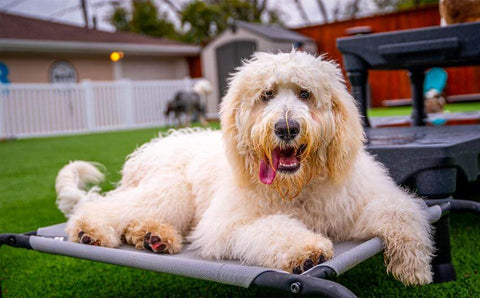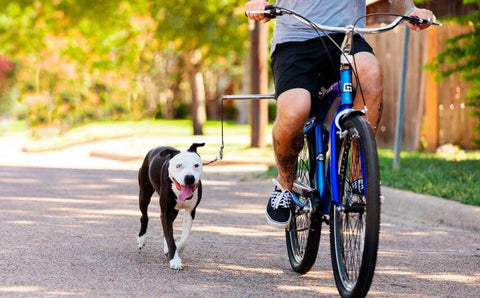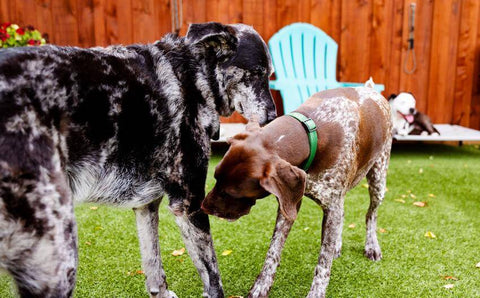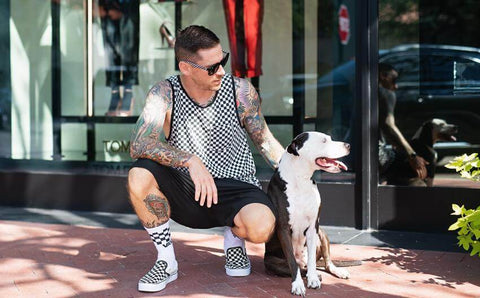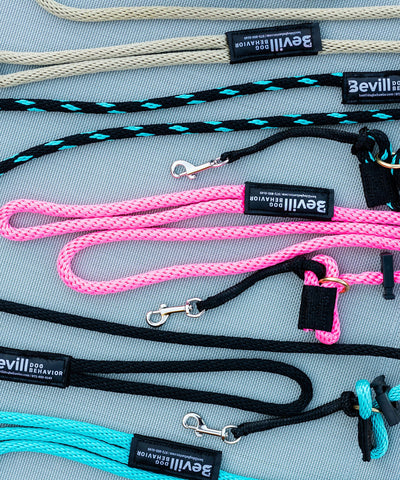Whether you’re trying to understand your long-time dog, or you’re considering getting a new dog, it’s important to know a few things about what makes a dog who they are. Knowing our dog on a deeper level allows us to better understand our individual dog’s needs. Just as humans have different personality traits that can be affected by the environment, our dogs too have unique dispositions that make them who they are as individuals. Generally speaking, we break down dog dispositions into 6 traits:
- Physical Energy Level (How much physical exercise does the dog need to be fulfilled?)
- Low, Medium, or High
- Intellect/Ability to Learn (How much mental challenge does the dog need to be fulfilled?)
- Low, Medium, or High
- Pack Position
- Front (decisive, confident, willing to lead)
- Middle (happy-go-lucky, greeters, ready to play)
- Back (sensitive, aware, and on alert)
- Drive Levels
- Prey Drive (Desire to chase/kill prey)
- Low, Medium, or High
- Pack Drive (Desire to work with the human/pack)
- Low, Medium, or High
- Defense Drive (Fight or Flight - Survival)
- Low defense drive = Flight; High defense drive = fight
- Emotional Sensitivity
- Low, Medium, or High
- Physical Sensitivity
- Low, Medium, or High
You likely have noticed some dogs are naturally more energetic than others. We characterize our dogs by energy level: either low, medium, or high. The most important thing to know about your dog’s energy level is that a high energy dog needs to drain a lot more energy than a low energy dog. That means they’re going to need more physical exercise to be fulfilled (though all dogs need a good deal of exercise).
Intellect refers to your dog’s ability to learn. Some dogs are just more prone to learning than others. We break down intellect into low, medium, and high ability to learn. This isn’t to say that a dog with a low intellect can’t learn anything, it just means it will take more repetitions and extra effort on our behalf.
There are three positions in the pack, and every dog will naturally gravitate toward one of them. This will affect how we work with them. The three positions are front, middle, and back. A dog at the front of the pack is comfortable making decisions and leading a group. This is the direction/protection position. Remember, in the human/dog relationship we want to be at the front of the pack, so dogs that naturally gravitate toward this position can be a little extra challenging (though certainly not impossible). The middle of the pack dogs are mediators between the front and back. They tend to be happy-go-lucky greeters that invite play and want everyone to get along. Dogs at the back of the pack tend to be very sensitive. They alert/warn the rest of the pack of dangers and environmental changes.
We break down a dog’s drives into three categories:
- Prey Drive (Desire to chase/kill prey)
- Pack Drive (Desire to work with the human/pack)
- Defense Drive (Fight or Flight - Survival)
Every dog has all three drives at some level. Prey drive is the desire to chase or hunt. This is triggered by scent, site, sound, and/or movement. Pack drive is the dog’s desire (or lack thereof) to work with the human/pack. Defense drive is a spectrum with the low-end being flight – running away to survive and the high-end being fight – moving forward and actively/physically altering the situation in order to survive.
Dogs, just like humans, have different levels of emotional sensitivity. Dogs can have a low, medium, or high level of emotional sensitivity. All dogs respond to our energy; however, some are just more in tune with what’s going on around them. A dog with a high level of emotional sensitivity can easily be thrown off balance, so we need to take extra care that we are mindful of our energy around them. And dogs with low emotional sensitivity will blow you off and oftentimes avoid or ignore direction.
Finally, we must understand our dog’s physical sensitivity: either low, medium or high. Physical sensitivity is important because as we’ve already discussed, “touch” is a form of communication in the animal world. Whether it’s a leash or our hand, we do physically touch our dogs in order to guide, calm, or interrupt their behavior. If a dog is highly physically INsensitive, it can make walks more challenging. Insensitive dogs don’t care or even notice that the leash/collar is putting a ton of pressure on their neck/trachea. On the other hand, we have to be very careful with physically sensitive dogs. It’s easy to accidentally break a dog’s trust by using touch at the wrong time or at the wrong intensity level with a highly sensitive dog.
Just like raising children, you must understand the dog in front of you and adjust your communication and teaching style accordingly.
To recap, we look at six main areas when trying to understand an individual dog:
- Physical Energy Level
- Intellect/Ability to Learn
- Pack Position
- Drive Levels
- Pack Drive
- Prey Drive
- Defense Drive
- Emotional Sensitivity
- Physical Sensitivity
These six traits make up our dog’s personality. When we start to understand our dogs on these levels, we can better guide them through our world. These criteria can also help us pick a dog who best fits our lifestyle, one that we will be well equipped to fulfill and lead. If you find your dog has traits that don’t necessarily line up with your own personality, try and remember this: life gives us the dog we need, when we need it. Your dog can help you learn and grow just as much as you can help them.
<< Previous Article: Dogs Want to Work. Let Them!Next Article: Dog Behavior 101: In Summary >>



